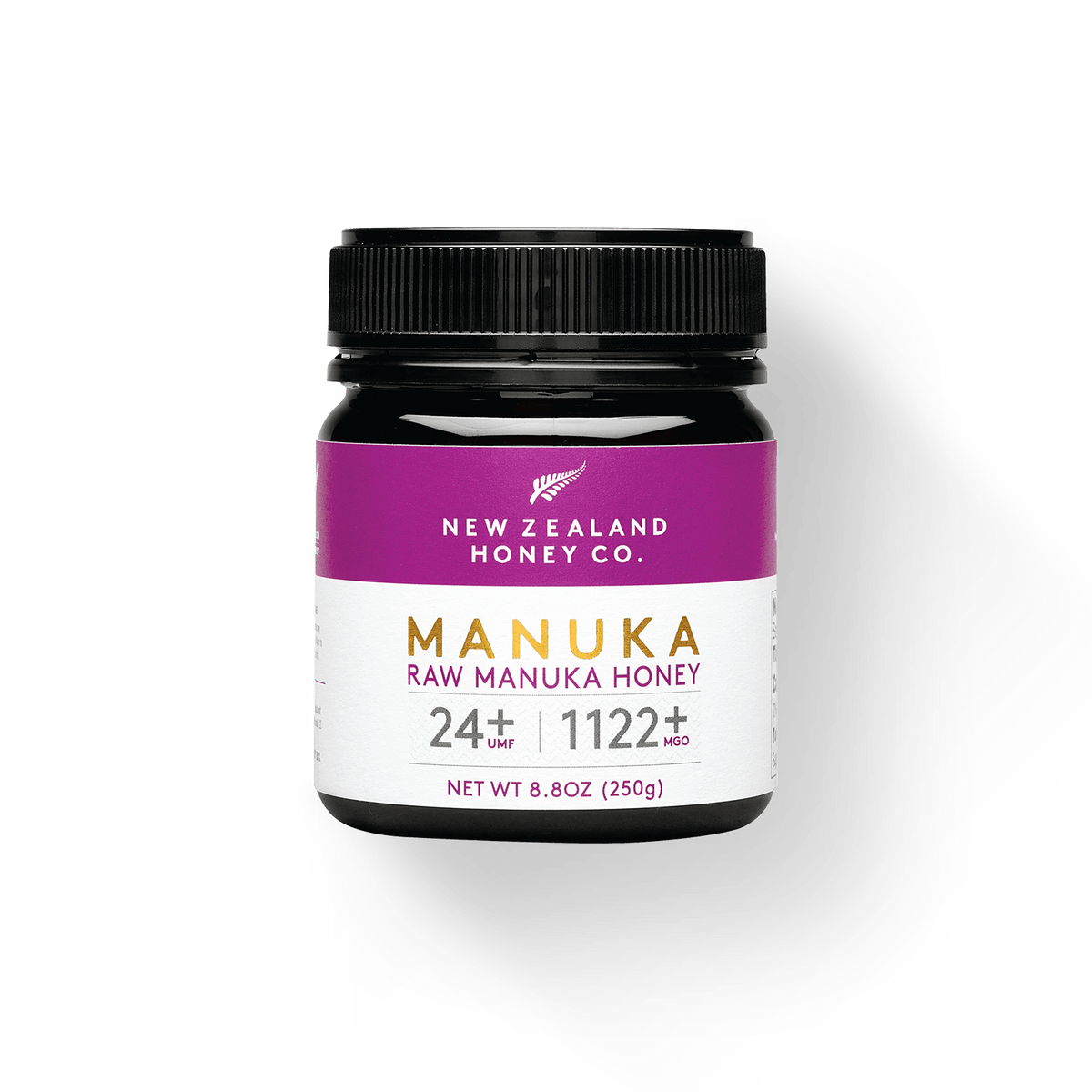How to Avoid Buying 'Fake' Manuka Honey
Manuka Honey is an incredibly sought after product that has gained worldwide attention. It’s full flavour profile, unique health characteristics and scarcity are why it continues to attract positive attention. So, why is Manuka Honey so special?
Firstly, it is only produced in New Zealand and in small quantities due to the short Manuka bloom which occurs once a year; for only around 8 weeks.
Secondly, the Manuka tree (Leptospermum Scoparium) is native to New Zealand and grows in remote regions of New Zealand that are difficult for beekeepers to access¹.
Lastly, the strength of Manuka Honey is determined by the MGO level and has been reported to treat anything from a sore throat to an infected wound depending on the level of strength.
So how do you know the Manuka Honey you're looking to buy is genuine Manuka Honey?
Like any industry, the Manuka Honey market has, and is, exposed to non-genuine Manuka Honey products that have appeared over time. In recent years some companies have been caught and prosecuted for marketing adulterated Manuka Honey on retail shelves globally.
Here are some tips to help you identify unadulterated, genuine and certified New Zealand Manuka Honey.
#1 It’s from New Zealand!
New Zealand products have a worldwide country of origin recognition, are globally trusted and authentic. Manuka Honey is only produced in New Zealand, so look for “Made in New Zealand” or “Product of New Zealand” on the label. Many honey brands are also licensees of the New Zealand FernMark Licence Programme or the New Zealand Made Licence Programme. The criterion is stringent to become eligible for both Licensee Programs. Both can be found on the label or the company’s website and if not you can search for FernMark licensees here or New Zealand Made licensees. We also encourage contacting the company directly to find out more information.
#2 It’s independently tested
Analytica Laboratories and Hill Laboratories independently test New Zealand Manuka Honey to ensure each batch meets the export requirements set by the Ministry of Primary Industries (MPI) as well as UMF™ grading and MGO levels. This information should be evident on the label, however, if not on the jar or the brand’s website we recommend asking them.
#3 It’s got the right rating
We understand the confusion that many consumers of Manuka Honey feel around ratings, gradings, numbers and acronyms. There are at least six grading systems that are recognised worldwide. While both the UMF™ and MGO grading and measurement systems are the most common and independent of one brand or another, the remaining are not. Some brands have created their own grading systems with little transparency or clarity on specific grading measurements².
The UMF™ grading system measures Leptosperin, MGO, DHA and HMF. It is the only grading system that measures all four chemical markers and is considered the strictest and highest graded Manuka Honey measurement system. Therefore, UMF™ graded honey can be trusted to contain the activity levels expected.
The MGO rating value measures only the MGO levels in honey. This is the milligrams per kilogram (mg/kg) of a unique, sugar molecule called Methylglyoxal (its acronym, MGO). It is found in all honey, however, it is present in a much higher concentration in Manuka Honey.
The UMFHA (Unique Manuka Factor Honey Association) is a member-only association made up of New Zealand Manuka Honey producers. Membership requires companies adhere to specific manufacturing, labelling and exporting requirements. A Manuka Honey with a UMF™ grading ensures you can have confidence
The thing that sets UMF™ graded Manuka honey apart from all other grading systems is that they operate a random testing program; this means that UMF™ labelled and rated honey is tested on shelves all around the world to ensure the honey on the shelf is exactly what is labelled on the jar.
#4 It’s the Right Price
Manuka Honey is much more expensive than supermarket honey. If it doesn’t feel right it won’t be. Manuka Honey that is too cheap and matches the price of supermarket honey or is produced by a brand that isn’t reputable should be avoided. You are far better off to put that money into an authentic jar of Manuka Honey³.
#5 It is approved by MPI (New Zealand government Ministry of Primary Industries)
All Manuka Honey sold for export must be tested by an MPI approved facility in order to measure four chemical markers taken from nectar of the Manuka flower and a DNA marker from the pollen of the Manuka flower. The purpose of these tests is to group Manuka Honey into Monofloral Manuka Honey (made by bees foraging on predominantly Manuka flowers) and Multifloral Manuka Honey (made by bees foraging on other flowers as well as Manuka). New Zealand Honey Co. Manuka Honey from UMF™ 5+ to UMF™ 15+ exceeds MPI’s export definition of Monofloral Manuka Honey.
In conclusion, look for Manuka Honey that has been harvested and packed in New Zealand, has a UMF™ rating and is independently tested by Analytica or Hill Laboratories. It will be more expensive than standard supermarket honey and must be tested in order to meet MPI’s export definition for honey sold on the international market.
Learn more about the different Manuka Honey grading systems including UMF™, MGO, KFactor, BioActive & more:
¹ https://www.doc.govt.nz/nature/native-plants/manuka-kahikatoa-and-kanuka/
³ https://newzealandhoneyco.com/blogs/honey-articles/why-is-manuka-honey-expensive
